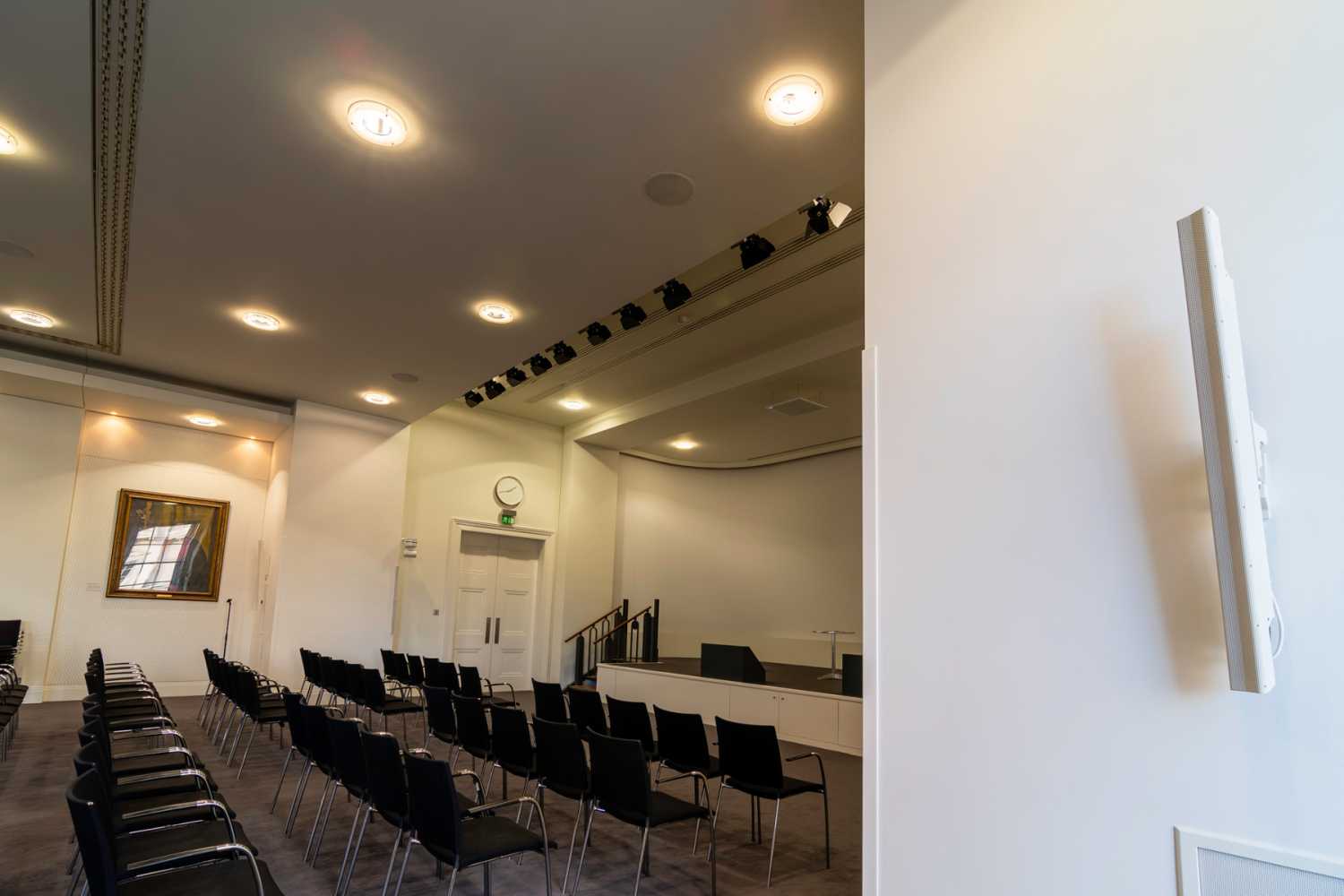Royal Society listens to the science of K-array
- Details

The Royal Society is the world's oldest independent scientific academy, dedicated to promoting excellence in science. Founded in 1660, it was granted a royal charter by King Charles II and today fulfils a number of key roles: promoting science and its benefits, providing scientific advice for policy, and fostering international and global co-operation.
Many of the Society’s events take place in the main lecture theatre, a 180sq.m multi-use space which they felt was in need of modernisation. The existing sound system of on-wall passive speakers reinforced by a grid of ceiling speakers was outdated, and lacked the articulation to be properly intelligible in all areas of the room, so resulting in several dead spots.
Having made a decision to overhaul many aspects of the building’s technology, the Royal Society’s technical team turned to Winchester-based Whitwam AV Integration, established in 1909 and providing bespoke technology solutions for over 35 years, and with whom the Royal Society has had a long-standing working relationship. Whitwam proposed an integrated audio system centred around K-array loudspeakers and amplification.
The Society’s introduction to the Italian loudspeaker manufacturer’s products came previously when an external client had brought in a K-array system and deployed it on speaker stands around the building. According to Whitwam Director, Andrew Pymm, they liked what they saw and heard: “They were impressed with the sound quality and the sleek looks, and asked for a demonstration to assess individual products in more detail.
“At this stage I brought in Dave Wooster of K-array’s UK distributor 2B Heard. I invited him to come and look at the site, take some measurements and prepare some EASE simulations. We then went up to Carlton House Terrace with a selection of speaker products he felt would be suitable, and arranged a live demonstration.”
Because the room is used for so many different types of event, the sound system was designed to provide separate zones which can be operated independently or in combination, and various configurations can be recalled instantly from a touch screen. Main programme audio is delivered via a pair of Domino-KF210 full range speakers mounted on the wall at left and right behind the cyclorama screen which, in combination with custom acoustic panelling to control the stage acoustics, provide a clear focus and directionality of the programme sound.
A couple of metres in front of the stage, double-stacked Viper-KV52 columns reproducing speech only are wall mounted left and right on custom fabricated CNC-routed wedges, designed to give a subtle inward angle and be virtually invisible against the décor.
Further down the room there are two sets of Kobra-KK102 one-metre-long line arrays on each side of the building, and for low frequencies there are Rumble-KU210 dual 10-inch subwoofers and Rumble-KU26 dual 6-inch subwoofers concealed in wall recesses beneath them.
Underneath the overhanging control booth, which previously was a difficult to reach sonic dead spot, a pair of ceiling mounted Viper-KV25 sub-miniature speakers provide improved clarity for those at the back of the room.
"K-array seem to be our speaker of choice at present,” says Andrew Pymm, director, Whitwam AV Integration. “When you want something really nice and elegant and sleek that fits into these modern environments, K-array just ticks all the boxes."
Liam Helm, AV manager at the Royal Society, comments. “It’s a totally different environment now. There is so much headroom on tap that we never have to worry about people who don’t naturally project well, or not being able to hear people in the room. The technicians are getting used to the idea that you don’t have to run the audio so hard – and in fact it works better when you don’t.”
(Jim Evans)
















